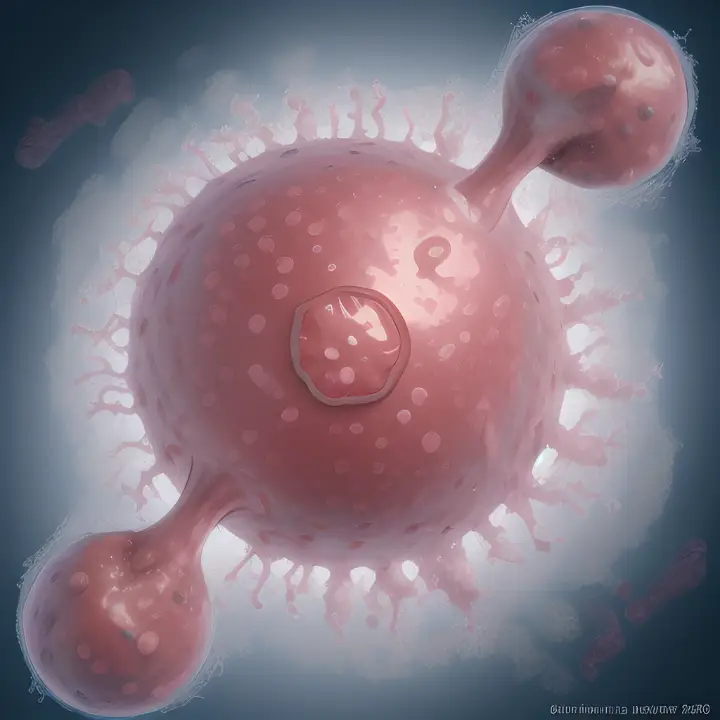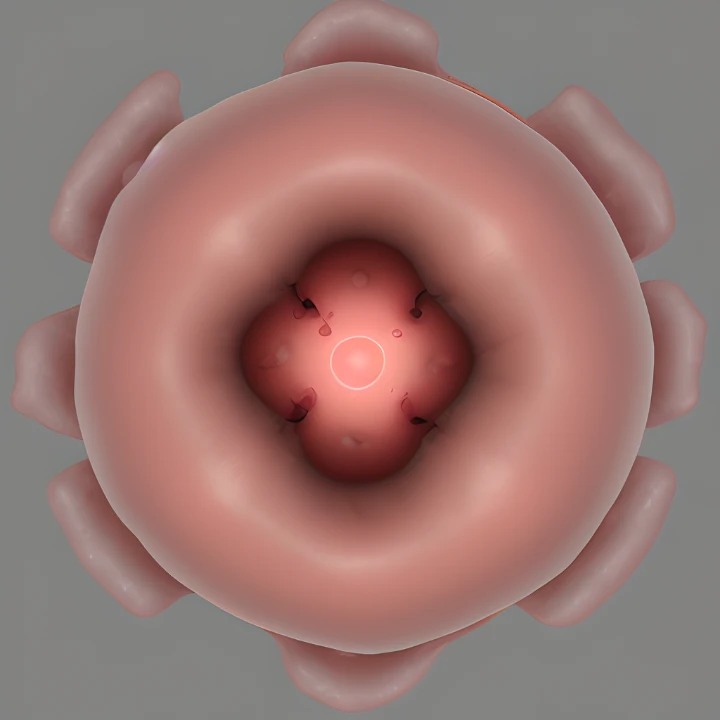Myelodysplastic Syndromes-What Are the Symptoms and Causes

Myelodysplastic syndromes affect the bone marrow, disrupting its ability to produce healthy blood cells. Each year, around 10,000 people in the United States receive this diagnosis, with most cases occurring in individuals over 70. You might notice symptoms like fatigue, shortness of breath, or frequent infections. These issues arise because of low blood cell counts, which weaken your body’s ability to function normally. Recognizing these signs early can help you seek medical advice and begin appropriate care.
Key Takeaways
Look for signs like feeling very tired, trouble breathing, or getting sick often. Finding these early helps get care quickly.
Know that myelodysplastic syndromes can happen from gene changes or harmful surroundings. Learning about these can help stop it.
Live healthy by not smoking and staying away from bad chemicals. This lowers the chance of getting myelodysplastic syndromes.
Go to the doctor often, especially if you had cancer treatments or family blood problems. Early checks can find problems sooner.
Learn about your illness and ways to treat it. Talking with doctors helps you handle symptoms better.
Symptoms of Myelodysplastic Syndromes

Common Symptoms
Fatigue and Weakness
Feeling tired or weak is one of the most common symptoms of myelodysplastic syndromes. This happens because your body has fewer red blood cells to carry oxygen. You may notice that even simple tasks leave you feeling drained.
Shortness of Breath
Low red blood cell levels can reduce the oxygen supply to your body. This often leads to shortness of breath, especially during physical activities. You might find it harder to climb stairs or walk long distances without feeling winded.
Frequent Infections
A low white blood cell count weakens your immune system. This makes you more prone to infections. You may experience frequent fevers or infections that take longer to heal.
Easy or Unusual Bruising and Bleeding
Low platelet levels can cause easy bruising or prolonged bleeding. You might notice small red or purple spots on your skin, known as petechiae. Nosebleeds or gum bleeding may also occur more often.
Dizziness and Headaches
Anemia, or a low red blood cell count, can lead to dizziness and headaches. These symptoms occur because your brain receives less oxygen than it needs to function properly.
Symptoms Based on Blood Cell Type
Anemia (Low Red Blood Cell Count)
Anemia can cause fatigue, pale skin, and chest pain. You may also experience heart palpitations or difficulty breathing. These symptoms result from your body struggling to get enough oxygen.
Neutropenia (Low White Blood Cell Count)
Neutropenia increases your risk of infections. You might experience frequent fevers or infections that do not go away easily. This happens because your body has fewer white blood cells to fight off bacteria and viruses.
Thrombocytopenia (Low Platelet Count)
Thrombocytopenia can lead to excessive bruising, frequent nosebleeds, or tiny red spots under your skin. These symptoms occur because your blood has fewer platelets to help it clot properly.
Impact on Daily Life
Difficulty Performing Routine Activities
Fatigue and shortness of breath can make daily tasks challenging. Activities like cooking, cleaning, or even walking may feel overwhelming.
Increased Risk of Complications
Low blood cell counts increase your risk of complications. For example, neutropenia can lead to severe infections, while thrombocytopenia may cause life-threatening bleeding. These risks often require you to adjust your lifestyle to avoid potential dangers.
Causes of Myelodysplastic Syndromes

Genetic Factors
Mutations in Bone Marrow Stem Cells
Genetic mutations in bone marrow stem cells play a significant role in the development of myelodysplastic syndromes. These mutations disrupt normal blood cell production, leading to abnormal or insufficient blood cells. Up to 80% of individuals with myelodysplastic syndromes exhibit genetic abnormalities. These mutations often affect pathways like RNA splicing, DNA methylation, and histone modification. The table below highlights some common mutations and their outcomes:
Mutation Type | Outcome Type |
|---|---|
TP53 mutations | Adverse outcomes |
FLT3 mutations | Adverse outcomes |
KMT2A (MLL) partial tandem duplications | Adverse outcomes |
SF3B1 mutations | Favorable outcomes |
IDH1 mutations | Worsened survival |
IDH2 mutations | Worsened survival |
Inherited Genetic Disorders
Certain inherited genetic disorders increase your risk of developing myelodysplastic syndromes. These conditions often affect bone marrow function or blood cell production. Examples include:
Fanconi anemia
Bloom syndrome
Down syndrome (Trisomy 21)
Ataxia-telangiectasia
Shwachman-Diamond syndrome
Diamond Blackfan anemia
RUNX1 familial platelet disorder with associated myeloid malignancies
Severe congenital neutropenia (Kostmann syndrome)
Dyskeratosis congenita
Environmental Exposures
Exposure to Chemicals (e.g., Benzene)
Long-term exposure to certain chemicals can harm your bone marrow and increase the risk of myelodysplastic syndromes. Benzene, commonly found in petroleum and rubber industries, is a well-known culprit. Other harmful exposures include alkylating agents and DNA topoisomerase II inhibitors. These substances can damage your bone marrow, leading to reduced blood cell production and increased vulnerability to infections and bleeding.
Radiation Exposure
Radiation exposure is another environmental factor linked to myelodysplastic syndromes. High-dose radiation, such as from atomic bomb blasts or nuclear accidents, poses a significant risk. Survivors of such events have shown a higher likelihood of developing myelodysplastic syndromes decades later. Clinical studies also reveal that patients who received radiation therapy for other conditions often develop high-risk disease profiles, further emphasizing the connection between radiation and this disorder.
Treatment-Related Causes
Chemotherapy-Induced MDS
Chemotherapy can damage your bone marrow, leading to treatment-related myelodysplastic syndromes (t-MDS). Cytotoxic drugs used in chemotherapy often cause genetic mutations in bone marrow cells. These mutations disrupt normal blood cell production, increasing the risk of developing myelodysplastic syndromes.
Radiation Therapy-Induced MDS
Radiation therapy, like chemotherapy, can also lead to t-MDS. The cytotoxic effects of radiation alter the genetic makeup of bone marrow cells. Patients treated with radiation alone may develop myelodysplastic syndromes with clinical characteristics similar to those seen in de novo cases. This highlights the importance of monitoring bone marrow health after radiation therapy.
Unknown Causes
Cases with No Identifiable Cause
In some cases, the exact cause of your condition may remain unknown. Despite advancements in medical research, doctors cannot always pinpoint why myelodysplastic syndromes develop. These cases are often referred to as "idiopathic," meaning they arise without a clear reason.
You might wonder why no cause can be identified. One reason is the complexity of the bone marrow and blood cell production process. Many factors influence this system, and not all of them are fully understood. Additionally, some cases may involve subtle genetic changes or environmental exposures that are difficult to detect with current technology.
Doctors often focus on ruling out known causes when diagnosing idiopathic cases. They may ask about your medical history, lifestyle, and any potential exposures to harmful substances. Even if no cause is found, understanding your symptoms and blood cell counts helps guide treatment.
Note: Not knowing the cause does not mean treatment is less effective. Your doctor can still create a personalized care plan based on your specific needs.
If you fall into this category, it is important to stay informed and proactive. Regular check-ups and open communication with your healthcare team can help you manage your condition effectively.
Risk Factors for Myelodysplastic Syndromes
Age and Gender
Higher Risk in Older Adults
Your risk of developing myelodysplastic syndromes increases as you age. Most diagnoses occur between the ages of 60 and 75, with the condition being rare in individuals under 50. This trend highlights the importance of monitoring your health as you grow older, especially if you notice symptoms like fatigue or frequent infections.
Slightly More Common in Men
Men face a slightly higher risk of myelodysplastic syndromes compared to women. This difference may stem from historical factors, such as higher rates of smoking and occupational exposure to harmful chemicals among men.
Lifestyle and Occupational Exposures
Smoking
Smoking significantly raises your risk of myelodysplastic syndromes. Harmful chemicals in tobacco can damage your bone marrow, leading to abnormal blood cell production. Quitting smoking not only reduces this risk but also improves your overall health.
Long-Term Chemical Exposure
If you work in industries like agriculture, petroleum, or rubber manufacturing, you may encounter chemicals like benzene. Prolonged exposure to these substances can harm your bone marrow and increase your likelihood of developing myelodysplastic syndromes. Taking precautions, such as using protective equipment, can help minimize this risk.
Medical History
Previous Cancer Treatments
Cancer treatments like chemotherapy and radiation therapy can increase your risk of secondary myelodysplastic syndromes. These therapies often damage bone marrow cells, leading to genetic mutations that disrupt normal blood cell production. If you have undergone such treatments, regular check-ups can help detect potential issues early.
Family History of Blood Disorders
A family history of blood disorders may also elevate your risk. Certain inherited genetic conditions, such as familial MDS, can predispose you to developing myelodysplastic syndromes. If blood disorders run in your family, discussing your medical history with a healthcare provider can help you understand your risk and take preventive measures.
Tip: Staying informed about your risk factors and maintaining regular communication with your doctor can help you manage your health effectively.
Myelodysplastic syndromes can significantly affect your quality of life, but early detection and proper management make a difference. You can identify this condition early by using advanced methods like cytogenetic testing, FISH, or PCR to detect genetic abnormalities. Managing symptoms effectively involves steps like following food safety precautions, engaging in daily exercise, and seeking emotional support. Treatments such as blood transfusions, growth factors, or targeted medicines tailored to specific genetic changes can also improve outcomes. If you notice symptoms like fatigue or unusual bleeding, consult a healthcare provider promptly for evaluation and care.
FAQ
What is the difference between MDS and leukemia?
MDS affects the bone marrow, causing abnormal blood cell production. Leukemia involves uncontrolled growth of abnormal white blood cells. While MDS can progress to leukemia, they are distinct conditions with different treatment approaches.
Can MDS be cured?
A cure is possible through a bone marrow transplant, but it depends on your age, health, and disease stage. Other treatments focus on managing symptoms and improving quality of life.
How is MDS diagnosed?
Doctors diagnose MDS using blood tests, bone marrow biopsies, and genetic testing. These tests help identify abnormal blood cell counts and genetic mutations linked to the condition.
Is MDS hereditary?
Most cases of MDS are not hereditary. However, some inherited genetic disorders can increase your risk. Discuss your family history with your doctor to assess your risk.
What lifestyle changes can help manage MDS?
You can manage MDS by eating a balanced diet, avoiding infections, and staying active. Regular check-ups and following your doctor’s advice are also essential for maintaining your health.
---
ℹ️ Explore more: Read our Comprehensive Guide to All Known Cancer Types for symptoms, causes, and treatments.
See Also
Understanding Chronic Myelogenous Leukemia: Symptoms And Causes
Acute Eosinophilic Leukemia: Key Symptoms And Causes Explained
Lymphoplasmacytic Lymphoma: Overview Of Symptoms And Characteristics
Breast Cancer: Identifying Symptoms And Understanding Causes
